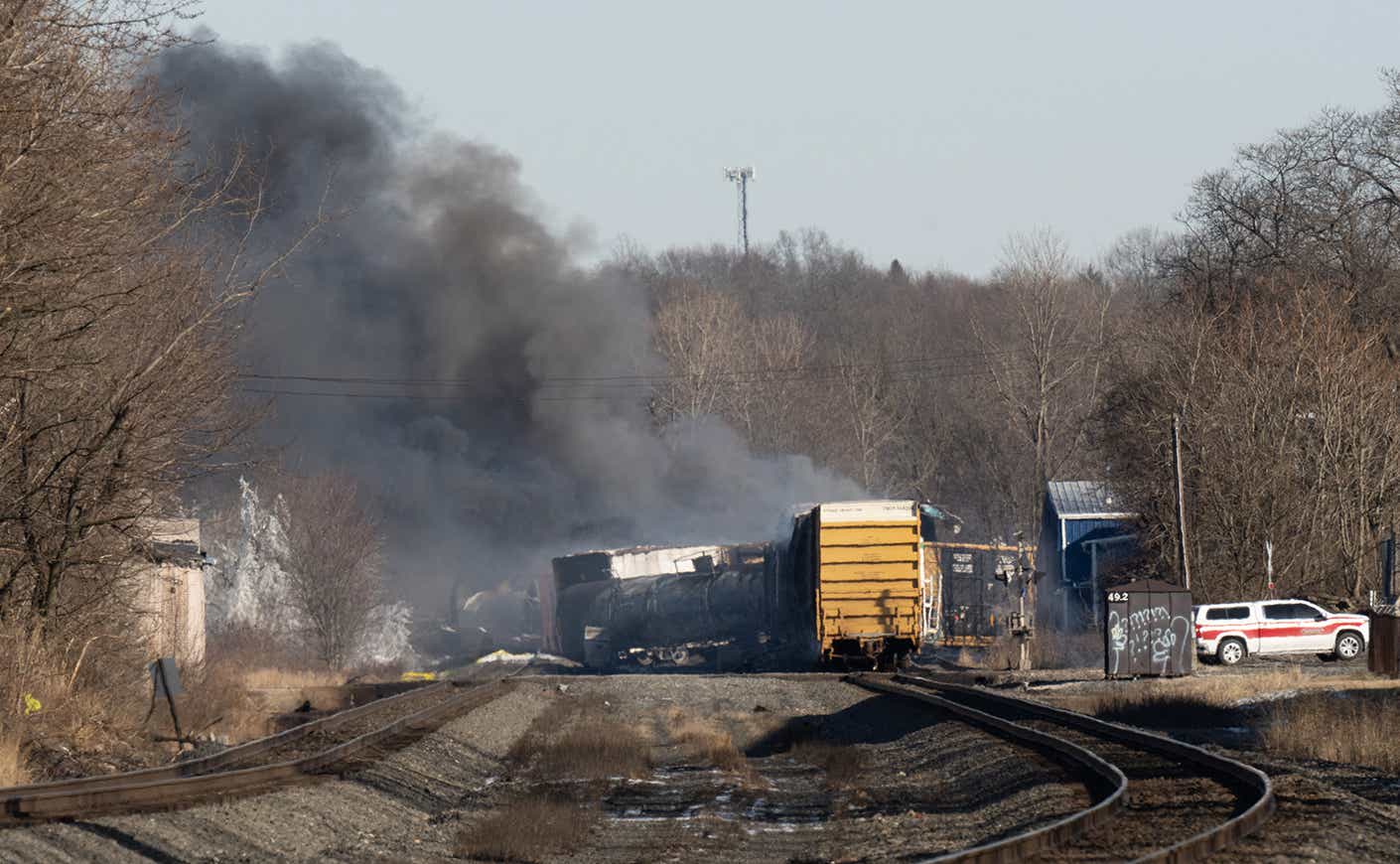On Feb. 3, a train carrying hazardous chemicals derailed in East Palestine, a small town in eastern Ohio. Those toxins, at least one of which has been linked to cancer, have seeped into the soil, water, and air, raising concerns about the long-term consequences this could have for the environment and the health of the people in East Palestine and beyond. Here’s the latest on the crash, what’s known about the carcinogens involved, and how far they could spread.
What happened in East Palestine?
About 50 train cars ran off the tracks, causing a fire that blanketed East Palestine — a town of about 4,700 residents — in dark smoke. Those living nearby were ordered to immediately evacuate.
The Environmental Protection Agency has said that 20 of the tanker cars contained dangerous flammable substances, including vinyl chloride, butyl acrylate, ethylhexyl acrylate, and ethylene glycol monobutyl ether. Fearing an explosion, which could have flung shrapnel as far as a mile away from the site, authorities performed a “controlled release.” On Feb. 6, they burned off the chemicals, which sent a massive plume of smoke high up into the sky. In the days since the accident, animals have been falling ill and dying, and people have complained of a burning sensation in their eyes and an odor that’s lingered in the town, NPR reports.
What’s known about the risks of exposure?
One of the pollutants experts are most worried about is vinyl chloride, a chemical that’s commonly used to make plastic. In the short term, the toxin can cause coughing fits, eye irritation, headaches, dizziness, and at high enough levels can be deadly, says Jerry Fagliano, Ph.D., a professor of environmental and occupational health at Drexel University. (Fagliano led an investigation into a 2012 derailment in Paulsboro, N.J. that also resulted in a vinyl chloride spill and tells Katie Couric Media the residents close to the crash had reported these symptoms.)
It’s also a carcinogen associated with a rare form of cancer called liver angiosarcoma, Dr. Fagliano says. The CDC warns that inhaling the gas “over long periods” could also put people at risk for other forms of cancer. Most of the research on vinyl chloride has focused on those who are regularly breathing in the substance toxin through their work — “So we don’t really know whether or not a short-term exposure to high levels could put people at risk,” Dr. Fagliano tells us. “The assumption is that it could.”
The other concern is the “controlled release.” Authorities made the call to burn off the vinyl chloride to prevent what would have been a catastrophic explosion, but in doing so, they released other dangerous chemicals into the air like hydrogen chloride and phosgene, which was weaponized during World War I.
“Obviously, you’re in a very difficult situation,” says Erik Olson, a director at the Natural Resources Defense Council. “You’re damned if you do, you’re damned if you don’t.”
How far could these hazardous chemicals spread?
These toxins can contaminate surface water, groundwater, and obviously spread through the air. The plume created by the controlled release resembled an ominous mushroom cloud, raising fears that the chemicals could travel a significant distance from the site. It’s possible that the substance could be detected miles away from the crash, Dr. Fagliano says, but because it dissipates as it travels, it likely won’t be found at dangerous levels.
Federal agencies monitoring the air in East Palestine said earlier this week they haven’t detected the chemicals at “levels of concern,” the New York Times reports.
Authorities are also keeping a close eye on the water. The Ohio EPA said low levels of butyl acrylate, which is used to make paint, were found in the Ohio River, but it’s so little that it doesn’t pose health risks, the Columbus Dispatch reports. The agency also said that its public water systems were likely capable of filtering out the chemical and that it will continue to screen for contaminants. There’s also concern about private wells, which tend to be shallow — and because of that, are more likely to have been affected by the spill, Olson, the Natural Resources Defense Council director, says.
Residents have since been told that it’s safe to return to their homes, but Dana Barr, a professor of environmental health at Emory University, says she thinks it would “probably be safer to wait until it seems things are under a bit more control” — or at the very least, would hold off on coming into contact with the creeks or other surface water in the area.
Chemical spills caused by train derailments aren’t common, although there have been over a dozen train derailments so far this year — a stat union advocates warn could get worse if conditions for railroad workers aren’t improved. Dr. Fagliano says it’s important that we understand that hazardous materials are traveling on our rail systems and through small towns like East Palestine every day, and the surrounding communities need action plans in place.
“These kinds of incidents, although rare, can happen, and we need to be ready for them.”









